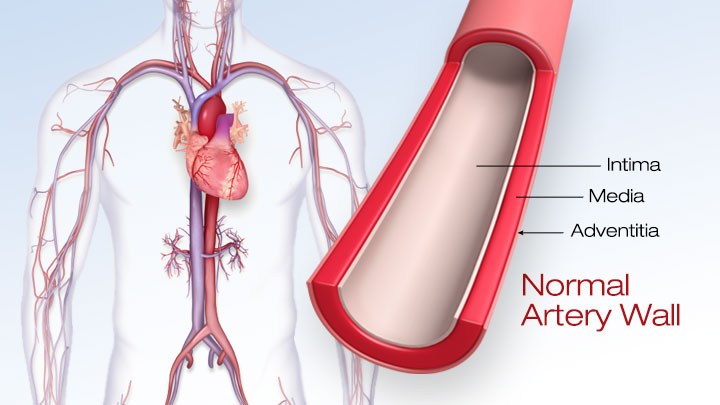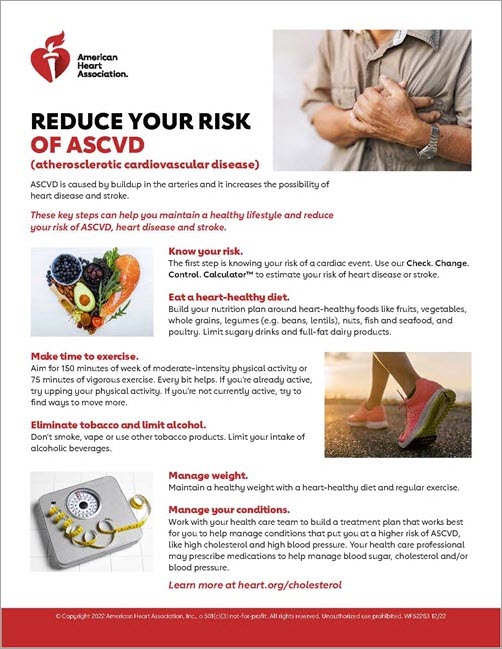What is Atherosclerosis?
Atherosclerosis and cholesterol
Plaque buildup, or fatty deposits, in your arteries is called atherosclerosis. These deposits are made up of cholesterol, fatty substances, cellular waste products, calcium and fibrin, a clotting material in the blood. Atherosclerosis is a type of arteriosclerosis. Arteriosclerosis means hardening of the arteries.
As plaque builds up, the wall of the blood vessel thickens. This narrows the channel within the artery – reducing blood flow. That lessens the amount of oxygen and other nutrients reaching the body.
Watch an animation about atherosclerosis.
Where plaque develops, and the type of artery affected, varies with each person. Plaque may partially or totally block blood flow through large- or medium-sized arteries anywhere in the body, including in the heart, brain, pelvis, legs, arms or kidneys. This can lead to conditions such as:
- Coronary heart disease (plaque in arteries in or leading to the heart)
- Angina (chest pain from reduced blood flow to the heart muscle)
- Carotid artery disease (plaque in neck arteries supplying blood to the brain)
- Peripheral artery disease, or PAD (plaque in arteries of the extremities, especially the legs)
- Chronic kidney disease
Plaque presents a double threat
Plaque itself can pose a risk. A piece of plaque can break off and be carried by the bloodstream until it gets stuck. And plaque that narrows an artery may lead to a blood clot that sticks to the blood vessel’s inner wall.
In either case, the artery can be blocked, cutting off blood flow.
If the blocked artery supplies the heart or brain, a heart attack or stroke occurs. If an artery supplying oxygen to the extremities (often the legs) is blocked, gangrene, or tissue death, can result.
Atherosclerotic cardiovascular disease (ASCVD) involves plaque buildup in artery walls, which includes conditions such as acute coronary syndrome and peripheral artery disease, and can cause a heart attack, stable or unstable angina, stroke, transient ischemic attack (TIA) or aortic aneurysm.
View What does ASCVD mean? (PDF) | Spanish (PDF)
View Tips for Talking to Your Doctor About ASCVD (PDF) | Spanish (PDF)
View Reduce Your Risk of ASCVD (PDF) | Spanish (PDF)
How it starts and how it progresses
Atherosclerosis is a slow, lifelong progression of changes in the blood vessels that may start in childhood and get worse faster as you age.
Many scientists believe plaque begins when an artery’s inner lining becomes damaged. Four possible causes of such damage are:
- Elevated levels of cholesterol and triglycerides in the blood
- High blood pressure
- Tobacco smoking, such as cigarettes
- Diabetes
Smoking plays a big role in the progression of atherosclerosis in the aorta (the body’s main artery), coronary arteries and arteries in the legs. Smoking makes fatty deposits more likely to form, and it speeds up the growth of plaque.
Video: What is ASCVD? | Watch video in Spanish








